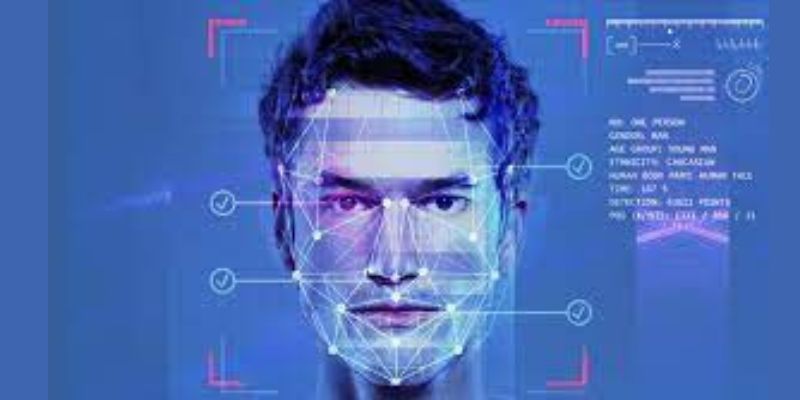In today’s digital era, the shift of banking operations to online platforms has increased the risk of fraud and cyber threats. A 2023 report found that 65% of companies, including banks, experienced fraud, although this was the lowest figure since 2014. Still, 71% of financial institutions reported breaches from business email compromises, highlighting persistent vulnerabilities.
In response, banks are increasingly adopting advanced fraud prevention solutions. By 2022, 45% of U.S. financial institutions had fully integrated digital fraud prevention tools. As cybercriminals continue to innovate, face matching technology that incorporates biometric verification is essential for safeguarding online banking, offering an extra layer of protection against identity theft and fraud.
Key Features of this Article
- Understanding face matching technology in online banking
- How AI powers face match for enhanced security
- Benefits of online face matching for banks and users
- Preventing fraud with AI-driven face matching
- Challenges and limitations of face matching technology
- The future of AI face matching in financial services
Understanding Face Matching Technology in Online Banking
Face matching technology in online banking uses biometric verification to authenticate users by comparing their facial features with stored images in a database. This method utilizes sophisticated artificial intelligence and machine learning techniques to effectively assess facial features, including the spacing between the eyes, nose, and mouth. When a user tries to log in, the system captures a real-time image and compares it to the saved photo. If the comparison is successful, access is granted. This approach improves security by making it more difficult for unauthorized users to gain entry, thereby lowering the chances of fraud and identity theft in digital banking.
How AI Face Match Works Enhanced the Financial Security
AI-driven face match technology significantly enhances financial security by utilizing advanced algorithms to verify users through facial recognition. Here’s how it works:
- Enrollment: Users submit a clear photo of their face, which is analyzed and stored securely in the system’s database.
- Capture: When logging in, the user’s camera records a current image of their face.
- Feature Extraction: The AI system identifies essential facial features, including the spacing between eyes, the contour of the nose, and other distinctive characteristics.
- Matching: The system evaluates the live image against the stored data to confirm a match.
- Authentication: If the features correspond, access is granted, providing secure and smooth user verification.
Preventing Fraud with Face Matching Online
Face matching technology is revolutionizing online security. By comparing a user’s live facial image with a stored reference, systems can verify identity with high accuracy. This powerful tool helps prevent identity theft and fraudulent activities.m Liveness detection, a key component of face matching, ensures that the person in front of the camera is genuine and not a photo or video. This technology analyzes facial features, movements, and lighting conditions to detect spoofing attempts. As technology advances, face matching becomes increasingly sophisticated, offering a robust defense against cybercrime and safeguarding sensitive information.
Benefits of Online Face Matching for Banks and Users
Online face matching technology offers significant benefits for both banks and users, enhancing security, user experience, and operational efficiency. Here’s how it benefits both parties:
| Benefits | Banks | Users |
| Enhanced Security | Reduces fraud by verifying identities. | Prevents unauthorized access to accounts. |
| Seamless User Experience | Simplifies the login process. | Faster login without passwords. |
| Cost Efficiency | Reduces costs associated with fraud management. | Eliminates the need for PINs and passwords. |
| Lower Risk of Identity Theft | Protects sensitive data from breaches. | Safeguards personal information. |
| Regulatory Compliance | Meets biometric authentication standards. | Assures compliance with secure login protocols. |
| Fraud Detection | AI can detect fraudulent behavior. | Provides peace of mind and reliability. |
Challenges and Limitations of Face Matching Technology
While face matching technology offers significant benefits, it also comes with certain challenges and limitations:
- Privacy Concerns: The collection and management of biometric information brings up concerns regarding privacy, particularly related to the potential for data misuse or security breaches.
- Environmental Factors: Poor lighting, camera quality, or background noise can affect the accuracy of face recognition.
- False Positives/Negatives: The system may sometimes incorrectly authenticate or deny access, especially with minor facial changes or injuries.
- High Costs: Implementing AI-based face matching systems can be expensive for banks and financial institutions.
- Bias and Accuracy: Some systems may have lower accuracy for specific demographic groups, potentially leading to discrimination.
The Future of AI Face Matching in Financial Services
The future of AI face matching in financial services looks promising, with advancements in technology enhancing both security and user experience.As artificial intelligence algorithms advance, facial matching systems will achieve greater accuracy and efficiency, leading to fewer false positives and negatives. Improved facial recognition technology will facilitate smooth multi-factor authentication by integrating biometric data with additional security measures. Additionally, the use of AI in detecting fraud and identity theft will evolve, offering real-time protection against increasingly sophisticated cyber threats. As regulatory frameworks adapt to these technologies, AI face matching will play a central role in shaping the future of secure and convenient financial services.


